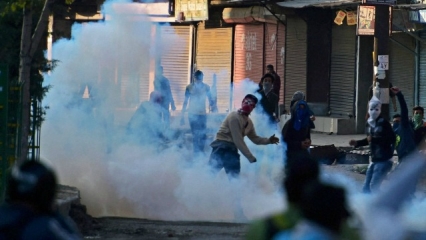Srinagar, Aug 16: Four youth were killed and six others injured today in security forces action against stone-pelting protestors in Magam area of central Kashmir's Budgam district, taking the death toll in the ongoing unrest in the Valley to 64

A group of youth pelted stones at a CRPF vehicle at Aripathan in Magam area this morning, a police official said.
In the retaliatory action by the security forces, one youth was killed while seven others sustained injuries, the official said.
Condition of two of the injured is stated to be critical.
Meanwhile, curfew remained in force in entire Srinagar district and Anantnag town while restrictions were in place in the rest of the Valley as normal life remained paralysed for the 39th consecutive day.
The official said curfew and restrictions were imposed to thwart the plans of separatists to organise sit-in protest against the civilian killings at main market places of the Valley.
"Curfew remained in force in entire Srinagar district and Anantnag town in south Kashmir as a precautionary measure to maintain law and order," the police official said.
Schools, colleges and private offices remained closed while public transport remained off the roads due to the strike called by the separatists.The attendance in government offices was thin.
Internet and mobile services across the Valley remained suspended.
While broadband services were snapped on Saturday evening, the mobile telephony was suspended late in the night on the same day.
Normal life has been affected due to protests against the killing of Hizbul Mujahideen commander Burhan Wani in an encounter with security forces on July 8.
60 persons, including two cops, have been killed and several thousand others have been injured in the clashes that began on July 9.




Comments
Is this happening in independence India??? Modi Please wake up
Add new comment